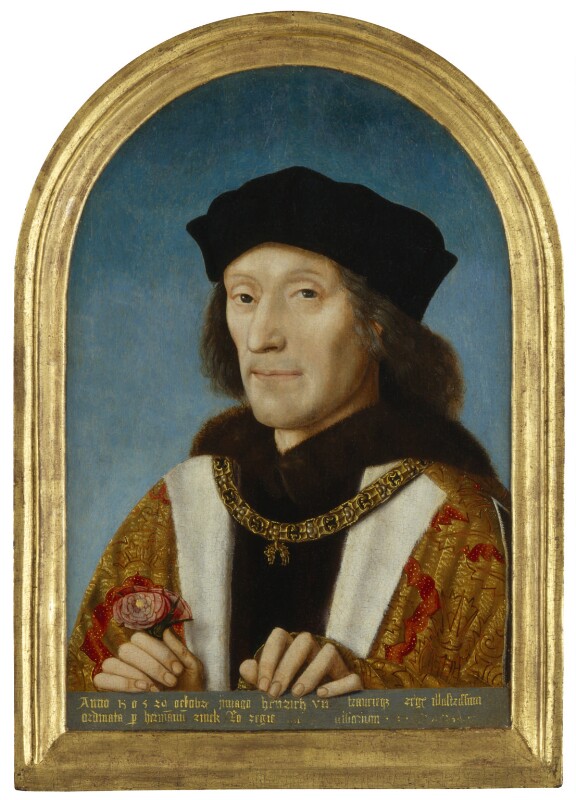Henry Tudor was born to Margaret Beaufort of the House of Lancaster—the “red roses” in 15th century England’s War of the Roses—and Edmund Tudor, the earl of Richmond, who died in Henry’s infancy. The War of the Roses came to a lull in 1471 when Edward IV (of the House of York, the opposing “white roses”) was restored to the throne—but his death 12 years later returned turmoil to England.
Encouraged by his Lancastrian maternal family, Henry contested the claim to the throne made by Richard III, the duke of Gloucester and Edward’s brother and most powerful general. It took two years, but Henry’s eventual victory ended the War of the Roses decisively and established the House of Tudor in the monarchy of England.
Peace and prosperity were Henry’s watchwords as king of England. Though his taxes were often high, they aimed not to line pockets but to restore the coffers depleted by civil war, and a treaty with the French that granted to them much of the territory they had gained during previous reigns brought substantial money to the royal treasury and spared the kingdom further fighting over matters now generations in the past.
  |
Economic reforms presaged the weakening of the nobility’s financial power compared to that of the merchant class, which under Tudor rule would become more and more significant up through the English Renaissance (both Henry VIII and Elizabeth I were Tudor monarchs).
Henry also turned the Star Chamber—a court that had developed from the royal council—into a special tribunal whose sessions were closed to the public, which made them available to commoners who sought to make complaints against the nobility.
Although the Star Chamber could examine and overturn the decisions of lower courts, it was explicitly used by Henry to ensure the power to prosecute individuals considered untouchable by ordinary courts. It was not a new concept—similar courts had been used across Europe for centuries—but Henry’s application of it at the end of the War of Roses helped to turn the chaos of that period into the opportunity for a new order.
Though it was his son and successor, Henry VIII, who would split the Church of England off from the diocese of Rome, Henry VII in a sense got the ball rolling: When his oldest son died, he sought to marry his daughter-in-law, Catherine of Aragon, to Henry VIII, his younger son.
A papal dispensation was necessary, and although it was granted, the necessity lent a tense tenor to European affairs for most of a year. Eventually, Henry decided against the marriage, and the dispensation was not required—but this betrothal was instrumental in influencing young Henry VIII’s opinion of the pope’s influence in royal matters.
